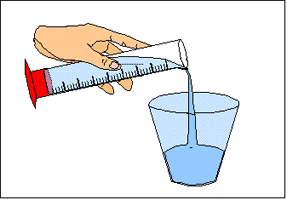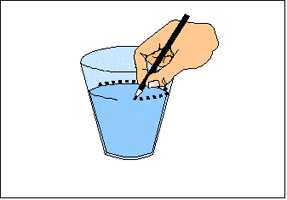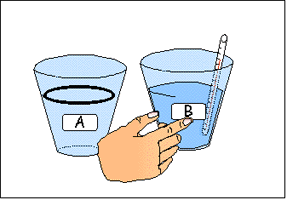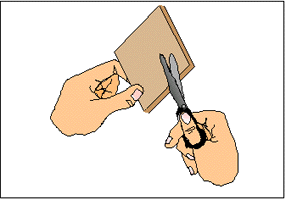|
Contributed by: Illinois Science Teachers Association (ILS)
Description:
Students perform routine laboratory procedures and report results.
The task assesses primary students' abilities to perform measurement
and reporting skills.
This task is designed to take students approximately 8 minutes
to complete.
Overall Task Content Area:
- Physical Science
Specific Knowledge Areas:
- Properties of Objects and Materials
Performance Expectations:
- using equipment
- gathering, organizing, and representing data
National Science Education Standards:
4 A SI 1: Abilities necessary to do scientific inquiry:
Grades K-4
1.3 Employ simple equipment and tools to gather data and extend
the senses. In early years, students develop simple skills, such as
how to observe, measure, cut, connect, switch, turn on and off, pour,
hold, tie, and hook. Beginning with simple instruments, students can
use rulers to measure the length, height, and depth of objects and
materials; thermometers to measure temperature; watches to measure
time; beam balances and spring scales to measure weight and force;
magnifiers to observe objects and organisms; and microscopes to observe
the finer details of plants, animals, rocks, and other materials.
Children also develop skills in the use of computers and calculators
for conducting investigations.
4 B PS 1: Properties of Objects and Materials: Grades
K-4
1.1 Objects have many observable properties, including size,
weight, shape, color, temperature, and the ability to react with
other substances. Those properties can be measured using tools,
such as rulers, balances and thermometers.
(Use the "hot" link on the PALS home page
to check the full text of related National Science Education Standards,
if desired.)
National Council of Teachers of Mathematics:
MEAS1: Understand measurable attributes of objects and
the units, systems, and processes of measurement:
Grades pre K-5 e. understand such attributes
as length, area, weight, volume, and size of angle and select the
appropriate type of unit for measuring each attribute
MEAS2: Apply appropriate techniques, tools, and formulas
to determine measurements:
Grades pre K-5 c. use tools to measure
Grades pre K-5 f. select and apply appropriate
standard units and tools to measure length, area, volume, weight,
time, temperature, and the size of angles
Grades pre K-5 g. select and use benchmarks
to estimate measurements
PS2: Solve problems that arise in mathematics and in
other contexts:
Grades pre K-5
General Instructions to the Teacher:
This task is designed to take students approximately 8 minutes to
complete.
Students will be working individually during this exercise.
Students should be ready to work as soon as the period begins.
The materials should be set out at each lab station, if possible.
A central supply area, if needed, should be easily accessible. All
supplies should be clearly labeled.
Materials for "Measurement: Length, volume, and temperature":
The teacher will need:
- pen
- ruler
- cardboard
- cups
- Graduated cylinder
- scissors
- plastic bags
At this station students should have:
- Piece of cardboard
- ruler
- Cup A (with a line marked on it)
- Cup B (3/4 full of water)
- Graduated cylinder
- Thermometer
Advance Preparation:
- Determine the volume of water needed to fill Cup A to the line
marked on its side. This volume should be for all stations. The
suggested volume is 85 ml. To mark the cup, measure exatly 85
ml in the graduated cylinder and pour into Cup A. With a permanent
marker, make several dashes along the water level on the outside
of the cup. Then connect these dashes with a continuous line.
- Place enough water in Cup B to provide students with sufficient
water to both measure temperature and measure out 85 ml of water.
- Allow the water to set for sufficient time to warm to room temperature.
Record this temperature in your scoring sheet at the end of this
section.
- Place all materials on top of the table.
- OPTION: place tape over the English scales of both the thermometer
and ruler, thus forcing students to use only metric measurements.
Safety:
- Be careful.
- Teachers and students should always exercise appropriate safety
precautions and utilize appropriate laboratory safety procedures
and equipment when working on science performance tasks.
Extensions/modifications:
- Measurement: Length, volume, and temperature is one part of
a five part assessment that was administered in Illinois. The
other 4 stations are "Classification," "Measurement: Using the
balance," "Mystery Boxes," and "Magnetic Testing."
- Ask students to select and use benchmarks to estimate measurements.
- Rubric language should be expanded and targeted to the specific
NCTM standard(s) to be measured.
Advanced Preparation Set Up
Pour water into cup.
 |
Draw water line.
 |
Label cups and take temperature of cup B.
 |
Cut cardboard.
 |
Organize student work station.
 |
|
|






